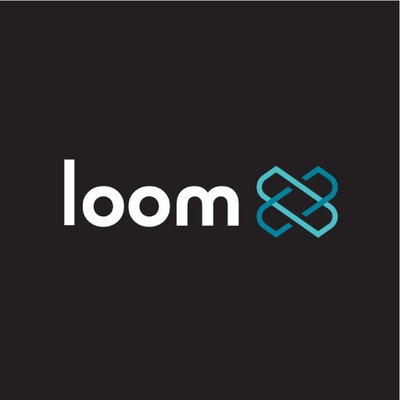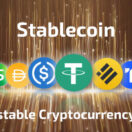Loom Network is a blockchain project that’s attempting to build an infrastructure platform for developing and running large-scale online games and social apps on Ethereum.
The unexpected popularity of CryptoKitties, the first viral decentralized application (dApp) on Ethereum, was enough to bring the network to its knees. The number of pending transactions reached all-time highs and transaction fees grew to absurd amounts. It highlighted the desperate need for scaling solutions and that’s where Loom Network comes in.
At this point in time, dApps on Ethereum have three bottlenecks that prevent them from scaling:
1. They’re competing with other dApps and transactions on Ethereum for resources. Users have to pay more gas to get their transactions confirmed faster.
2. Their transactions are treated with the same level of security as transfers of millions of dollars in ETH. Not every action on a dApp needs the highest level of security. Attackers don’t really have any incentive to exploit minuscule value transfers on games compared to ETH transactions worth millions of dollars.
3. Unless there is a central entity controlling them, most dApps can’t be updated.
Loom Network proposes using sidechains to develop frictionless blockchain games and social media apps. It provides the tools for building fast, scalable, and stable dApps that are secured by the Ethereum blockchain.
The Bangkok-based project was founded in 2017 by Mathew Campbell, James Duffy, and Luke Zhang. It has already seen success with CryptoZombies, a web-based interactive code school that teaches developers how to write smart contracts using the Solidity programming language. CryptoZombies is now the most popular Ethereum code school with 175,000+ students.
How Loom Network Works
Loom enables developers to create sidechains that are bonded to Ethereum smart contracts via a relay. The platform’s core product is an SDK that generates what’s called a dAppChain—dApps running their own sidechains that use Ethereum as a base layer. Running a dApp on its own sidechain has a number of benefits:
dAppChains can use alternative consensus algorithms (like DPoS), allowing developers to customize scalability and security tradeoffs to suit their application’s needs. DPoS (Delegated Proof of Stake) is the default option because it enables the development of large-scale games and social media apps, which are the two main types of dApps Loom Network is focusing on.
Using Ethereum as a base means dAppChain assets (like ERC20 and ERC721 tokens) are secured by Ethereum. dAppChains use Plasma-based relays to transfer assets back and forth from Ethereum.
In short, developers can use the Loom SDK to build dApps backed by Ethereum.
The first dApp released on the Loom Network is DelegateCall—a blockchain-based Q&A site that’s similar to Stack Overflow. Karma points earned on the dApp can be traded for DelegateCall tokens, which can be transferred on Ethereum and sold for ETH. Loom Network plans to launch three more dApps in 2018.
Loom Plasma
Plasma is a scaling framework that enables smart contracts to make fast and secure deposits and withdrawals between blockchains. It was proposed by Vitalik Buterin as a way to enable Ethereum to scale and handle much larger data sets than is currently possible.
Loom Network is adding Plasma, specifically Plasma Cash, to dAppChains to enable users to securely transfer assets onto sidechains. Plasma Cash associates sidechain token deposits with a unique serial number. The tokens gain their own history and become non-fungible, allowing for the possibility of zero-confirmation transactions.
If fraud or a hack occurs, users can quickly reclaim their tokens from Ethereum by using Plasma exits. Plasma Cash will bring security to dAppChains and allow core operations to function without needing a high level of trust.
Loom Network vs. Other Platforms
Loom Network is directly competing with EOS, which was hailed as the “Ethereum killer” because of its promise to bring almost unlimited scalability to blockchains by using a dPoS system. But EOS has so far failed to deliver and Loom’s dAppChain approach appears to be successfully doing what the EOS chain is failing.
The Loom SDK makes it easy for anyone to build a customized blockchain that’s interoperable with the Ethereum mainnet. Whoever builds a blockchain can choose the consensus algorithm they want to use, the number of validators they need, etc. dApps developers can essentially choose their own tradeoffs for decentralization and scalability. dAppChains enable:
A user-friendly way for developers to build their own dApp without having to know anything about implementing actual blockchain logic.
The construction of large-scale games that are no limited by the high cost of gas or slow speeds on Ethereum.
dApps are completely run on a decentralized blockchain, unlike popular dApps that partially run on Ethereum and the rest run on a centralized web server.
dAppChains allow developers to fork and update dApps, allowing further experimentation and innovation.
Scalability is a big problem for blockchain technology, and reliable scaling solutions are necessary if the technology is to become mainstream. Loom has at least managed to show some progress where projects like EOS have failed.
The LOOM Token
Loom Network has its own native token called LOOM that functions as a lifetime membership card to all dApps running on the network. It allows users to transfer data and digital assets between dAppChains and the Ethereum mainnet. LOOM tokens will used for:
Staking – LOOM holders can stake their tokens to earn in-game rewards.
Payment to run dApps – Developers who want to run dApps must lock a minimum of 10 LOOM into a smart contract to power their dApp (more for higher volume dApps). The locked tokens are deducted each month based on how much bandwidth the dApp consumes.
Enterprise Support – Enterprises that want to run their own standalone dAppChain and can get premium hands-on support from the Loom developer team for 100,000 LOOM per year.
Access to Loom Transfer Gateways – Users who want to transfer their assets to Ethereum or another dAppChain will need to hold 1 LOOM token as a membership key.
Loom SDK license Tiers and Running Nodes – Developers must have enough tokens to cover their license tier for both operating a node on a private dAppChain and using the Loom SDK. Membership prices start at 10 LOOM for the basic version of the SDK, and can go up to 10,000 LOOM for larger deployments.
LOOM Trading Volume, Pricing and Market Cap
The total supply of LOOM caps at 1 billion tokens. The tokens are distributed as follows:
– 35% is held by the company as a reserve fund
-10% is held by team members and advisors with a 6-12 month lockup period
-55% (the rest of the supply) is in circulation
When LOOM joined the market in March 2018, the price of one token was just $0.07 USD. Its value rose tenfold in May 2018 to reach $0.7 USD with a whopping $409 million USD valuation. It wasn’t able to maintain that upward trajectory and its price has since fallen, but it will likely go up again once Loom SDK goes live.
Buying, Storing and Selling LOOM
LOOM tokens can be acquired directly from the Loom Network at a fixed price of $1.99. They can be bought at cheaper prices on various exchanges, including Binance, Upbit, Kucoin, LATOKEN, Hotbit, IDEX, and Bitbns.
LOOM is an ERC20 token, which means it can be stored on any Ethereum wallet that supports the standard, including MetaMask, MyEtherWallet (MEW), Jaxx, Exodus, Parity, and Mist. For more secure storage, hardware wallets like Trezor and the Ledger Nano S will also work.
Liquidity of LOOM
LOOM is doing remarkably well and has great market liquidity for a closed-source project that has no white paper because its developers are “too busy shipping code.” So far, they’ve done just that.
Loom launched its first dAppChain on March 14, 2018, and has plans to launch three more internal dAppChains by Q2 2018. The Loom SDK went into beta in June 2018 and the network is already accepting applications for dApps from interested developers.
Scalability is one of the biggest issues in blockchain technology, and scaling solutions are imperative for blockchain-based applications to catch on. That’s what makes Loom Network so promising. It’s not perfect and is still a work in progress, but it has at least managed to show some progress in a field where so many other blockchain projects have stalled.






